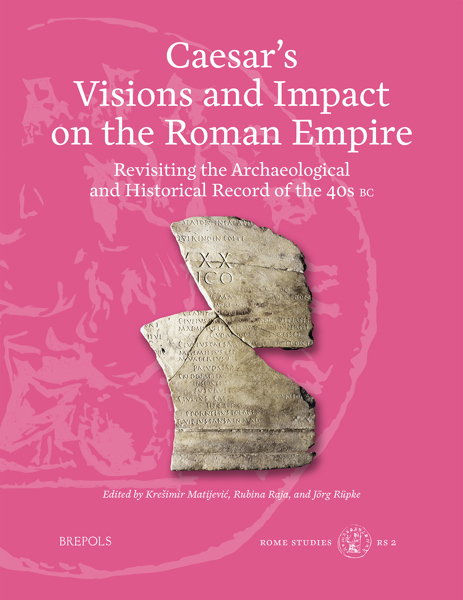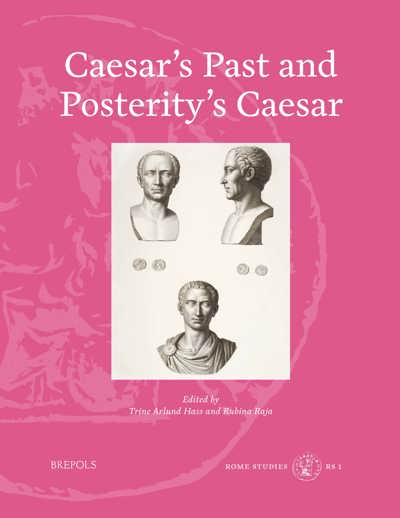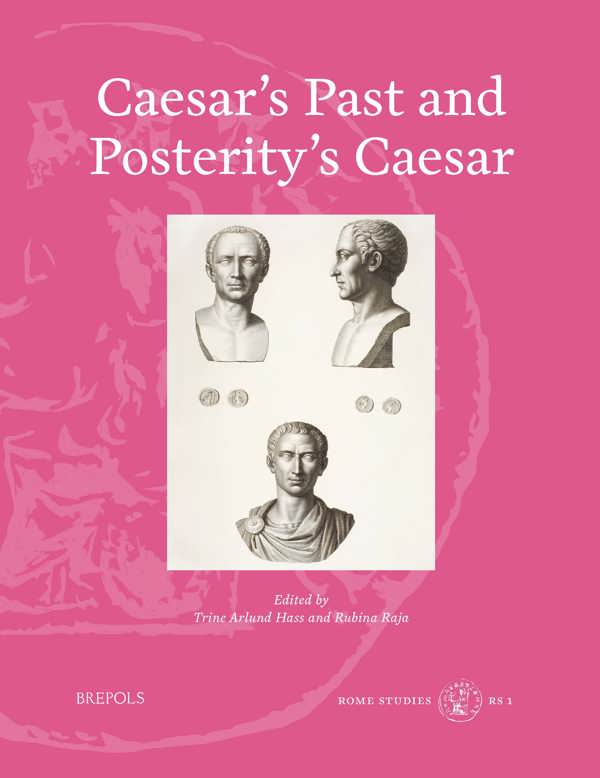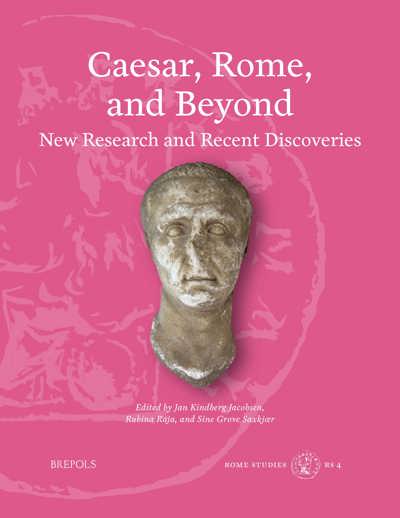
Caesar’s Past and Posterity’s Caesar
Trine Arlund Hass, Rubina Raja (eds)
- Pages: xii + 248 p.
- Size:216 x 280 mm
- Illustrations:42 b/w, 11 col., 1 tables b/w.
- Language(s):English
- Publication Year:2021
- € 95,00 EXCL. VAT RETAIL PRICE
- ISBN: 978-2-503-59130-8
- Paperback
- Available
This volume focuses on the reception of Gaius Julius Caesar, one of the most well-known and widely discussed personalities of Antiquity.
“This splendid volume offers fifteen papers that make interesting and useful contributions to our understanding of the figure of C. Julius Caesar, both in his own milieu and in subsequent reception stretching from the moment of his death up to recent years.” (Richard Westall, in Histos, 15, 2021, p. cviii–cxiii)
“This insightful volume highlights the impact of Caesar both in his own lifetime and among the subsequent generations who have received, remembered and reimagined him in myriad ways. In particular, the contributors show that Caesar’s refashioning of the heart of Rome offers a lucid case study of how landscape, topography and architecture can be manipulated to reflect power, to inspire civic support and to memorialise individuals.” (Claire Nesbitt, in Antiquity, 96, 2022, p. 1359)
« Pour conclure, ce volume inaugurant la nouvelle collection Rome Studies offre de nouvelles études de cas intéressantes sur les questions mémorielles et la réception de César. Elles intègrent ainsi une riche bibliographie. Notons enfin la grande qualité des illustrations, y compris en couleurs. » (Cyrielle Landrea, dans Anabases, 37, 2023, 377-379)
Trine Arlund Hass is a post-doctoral researcher in classical philology and reception studies at The Danish Academy in Rome and Aarhus University. Her project Our Caesar: Danish receptions of Gaius Julius Caesar collaborates with the Danish-Italian excavations of Caesar’s Forum in Rome.
Rubina Raja is professor of classical archaeology and director of Centre for Urban Network Evolutions. She co-directs the Danish-Italian excavations of Caesar’s Forum in Rome.
Gaius Julius Caesar was the first to design a forum in his family’s name. The forum itself had two focal points — a temple to Venus Genetrix and an equestrian statue of Caesar himself — carefully juxtaposed to create a narrative of a strong, enterprising, and controversial sovereign to whom legitimacy was granted by his divine lineage and links to Rome’s mythical founders. Through this design, the expansion of the older Forum Romanum thus became a promotion of Caesar himself in a clever show of identity politics. It was a bold — and ultimately fatal — undertaking, and it demonstrates a political vision that not only divided his contemporaries but that has continued to drive scholarly debate, with Caesar variously realized as a mirror for Antiquity, a representative of an age, and a ruler to be examined in relation to all applicable dilemmas and conflicts.
This important volume offers new insights into the legacy of Julius Caesar by focusing on two central questions: how did he use the past to construct his own persona as head of the Roman State and Empire? And how has he been remembered — and used — by posterity? Contributions from a range of fields, among them archaeology, classical studies, and history, engage with these questions as they explore Caesar’s own self-fashioning through his use of city space, rituals, wars, history, and literature, as well as tracing how he and his actions have been understood, justified, criticized, and used in the centuries since his death, from late antique literature to nineteenth-century drama.
List of Figures
List of Abbreviations
The Man behind the Sources: Caesar’s Past and Posterity’s Caesar — TRINE ARLUND HASS and RUBINA RAJA
I. Caesar and his Time
The Role of the Romans’ Early History in the Late Republican Period — SINE GROVE SAXKJÆR
Caesar and the Pomerium of Rome — PAOLO LIVERANI
Shaping Caesar’s Past for Posterity: Caesar d. f. Augustus — KARL GALINSKY
Creating Memories in and of Urban Rome: The Forum Iulium — RUBINA RAJA and JORG RUPKE
The Invention of Civil War Writing: The (Curious?) Case of Caesar — CARSTEN HJORT LANGE
II. Caesar in Antique Historiography — in Retrospect
Caesar’s Place in the Course of Tiberian Historiography — BRIDGET ENGLAND
Caesar the Orator in Retrospect — HENRIETTE VAN DER BLOM
Between Dynast and Legitimate Monarch: Imperial Reflections of Julius Caesar — JESPER MAJBOM MADSEN
Julius Caesar in Western Late Antiquity — GIUSEPPE ZECCHINI
III. Post-Antique Historiography and Modern Perceptions
Should They Rot in Hell? Fifteenth-Century Discussions of Brutus and Cassius — and Caesar’s Murder — MARIANNE PADE
Lurking in the Jacobean Shadows: Historicity and Topicality of the Character of Julius Caesar in Ben Jonson’s Catiline: His Conspiracy — MIRYANA DIMITROVA
A Bad Tyrant Born to Command: N. F. S. Grundtvig’s Representation of Caesar in the Handbook of World History (1833) — TRINE ARLUND HASS
Ancient Contemporary History and Enlightened Philosophy of History: Caesar and Voltaire as Models for Frederick the Great’s Historiography — THOMAS BISKUP
Lessons in History: Bernard Shaw’s Discomforting Caesar — MARIA WYKE
The Forum of Caesar: A Historiographical Review — NIKOLINE SAUER


